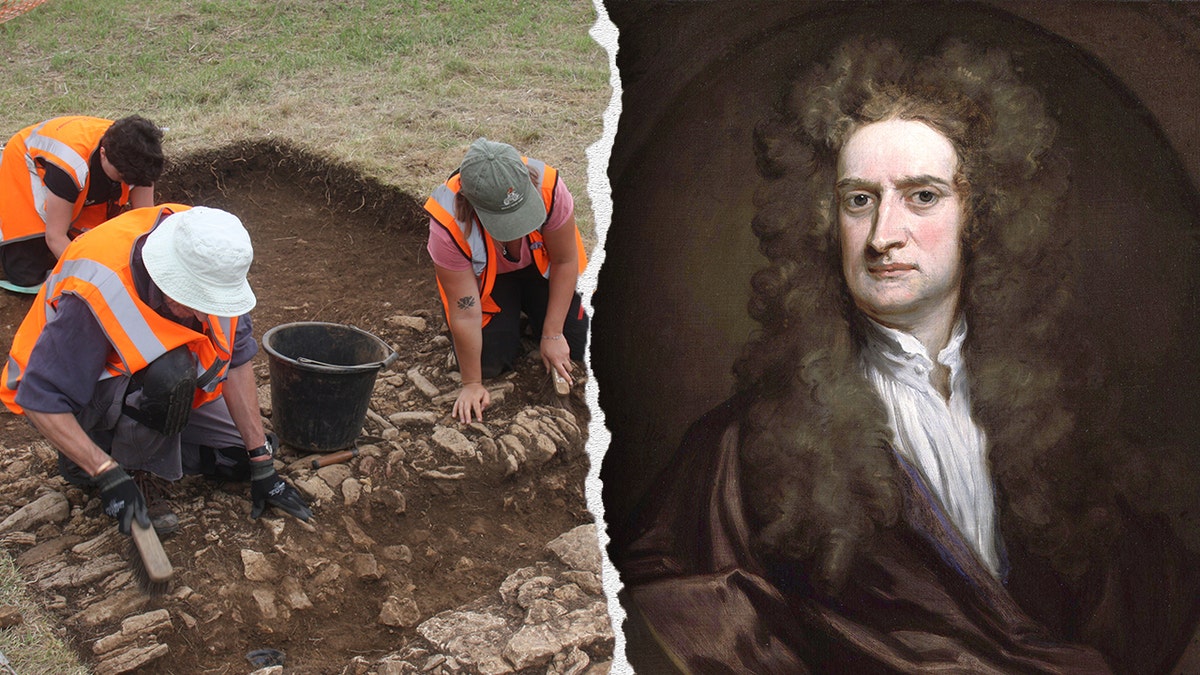【】
发布时间:2025-09-11 21:01:57 来源:都市天下脉观察 作者:时尚
- Comments
Archaeologists solve 1,800-year-old Roman fresco puzzle in London
London researchers have reconstructed a large Roman wall plaster collection, revealing 1,800-year-old frescoes that decorated a high-status building. (Source: MOLA)
NEWYou can now listen to Fox News articles!British archaeologists recently found the remnants of a 17th-century house where Isaac Newton’s mother lived – not far from the site of his famous apple tree.
The National Trust announced in a recent press release that it had found a trove of everyday objects from the site of his mother's former house near Woolsthorpe Manor, an estate-turned-museum near Grantham, Lincolnshire.
Isaac Newton was born and raised at Woolsthorpe Manor. In 1665, he left Cambridge University during the Great Plague, and legend holds that he developed his theory of gravity thanks to a tree on the property.
SINKHOLE IN HISTORIC CITY REVEALS MEDIEVAL HOSPITAL HIDING JUST BENEATH STREET LEVEL
Though he and his mother lived on the same property, they didn't live under the same roof. After his father died, Newton's mother, Hannah Ayscough, left him to be raised by his grandparents when she married a vicar.
When her second husband died, Ayscough arranged for a house to be built next to Woolsthorpe Manor. She lived there with her children from her second marriage.

Archaeologists unearthed artifacts from the long-lost 17th-century home of Isaac Newton's mother. Sir Isaac Newton is shown at right. (Phil Adams, National Trust; VCG Wilson/Corbis via Getty Images)
Archaeologists believe that Ayscough's house was demolished after a fire destroyed it in the early 1800s – but its remains have only just been uncovered in new excavations.
TOWER OF LONDON DIG REVEALS BLACK DEATH-ERA SKELETONS BELOW POPULAR TOURIST SITE: 'TIP OF THE ICEBERG'
"Searching for the exact location of the house, the archaeologists discovered rubble from its demolition – and intriguingly, some objects which might have been in the house when the Newton family was there," the National Trust's statement said.
The artifacts included thimbles, a needle remnant and buttons — in addition to animal bones that showed signs of butchering.
"We can really imagine Hannah and the family eating from items like the Staffordshire slipware."
- 上一篇:Christian foster parents fight state's gender affirmation requirement
- 下一篇:NYT reporter defends NYC mayoral hopeful Mamdani against socialist labels
相关文章
- 皇家马德里夺得2024国际足联洲际杯冠军
- 暑假期间,首都儿童医学中心周六周日均开放日间手术 — 新京报
- 过去一小时,北京怀柔、密云、顺义降水明显 — 新京报
- 逛机器人4S店、到机器人餐厅用餐,在北京亦庄成为现实 — 新京报
- Methanol hidden in some cocktails sold abroad reportedly caused blindness, traveler claims
- 北京市水文总站解除洪水蓝色预警 — 新京报
- 捕捉精度达“亚毫米”级!亚洲最大动作捕捉基地建成投用 — 新京报
- 北京市发布雷电蓝色预警 — 新京报
- 体育场馆“老先进”的“孩子经”
- 亚洲青年管弦乐团在京举办庆祝成立三十五周年音乐会 — 新京报
- Longtime CBS News correspondent Mark Knoller dies
- 他们用手电照亮急流,踩着30公分的木板,背出最后的30位村民 — 新京报
- 北京立秋后第一场雨即将到来,明天全市有中到大雨 — 新京报
- 北京朝阳科技服务业实现营收、拉动力全市“双第一” — 新京报
- Early hearing aid use slashes dementia risk by 61%, research reveals
- 门头沟区已转移14273人 — 新京报
- 北京市殡葬服务专线96101正式开通试运行 — 新京报
- 三地区高温健康风险“极高”,北京首次发布高温健康风险预警 — 新京报
- Claremont colleges face civil rights complaint over race
- 暑期未成年人网络保护专项举报工作阶段性成果公告 — 新京报
随便看看
- Copyright © 2025 Powered by 【】,都市天下脉观察 辽ICP备198741324484号sitemap
